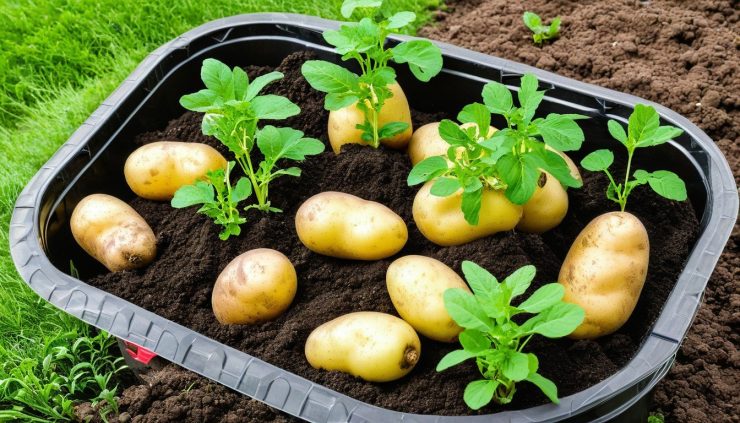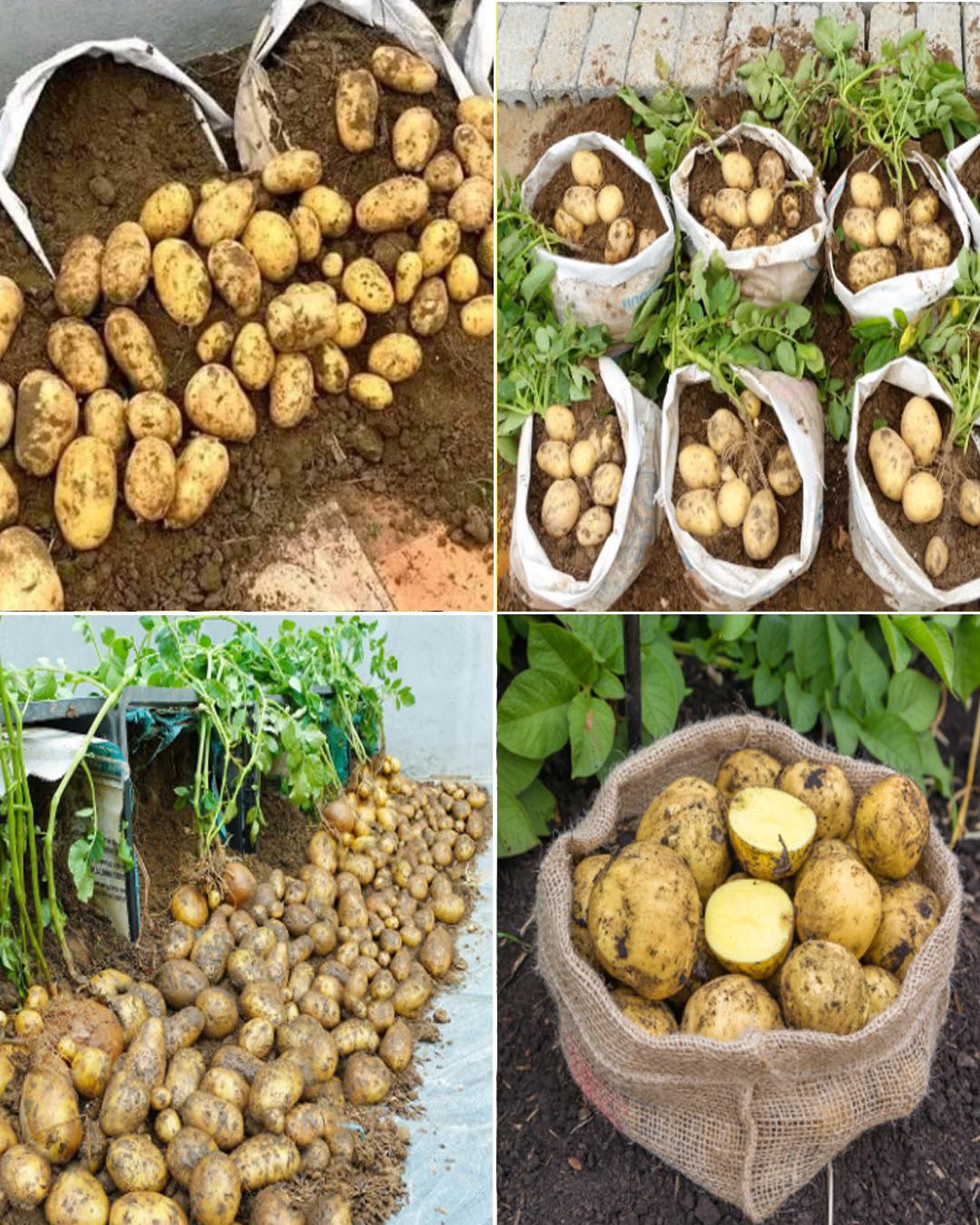If you’re interested in gardening but don’t have a large outdoor space, you can still grow delicious potatoes right at home using plastic containers. Container gardening is a great way to maximize limited space and enjoy homegrown produce. Here’s a step-by-step guide on how to grow potatoes in plastic containers:

What You’ll Need:
Seed potatoes (readily available at gardening stores)
Large plastic containers (about 5-gallon or 20-liter size)
Potting soil or a mixture of potting soil and compost
Water
Sunlight
Time and patience
Step 1: Choose Your Container
Select a large plastic container with drainage holes at the bottom. The container should be at least 12 inches (30 cm) deep to allow enough room for the potato plants to grow. You can repurpose old buckets, storage totes, or buy containers designed for gardening.
Step 2: Prepare the Potting Mix
Fill your container with potting soil, leaving about 4 inches (10 cm) of space at the top. You can also add compost to enrich the soil with nutrients.
Step 3: Plant Your Potatoes
Cut your seed potatoes into smaller pieces, ensuring each piece has at least one or two “eyes” or sprouts. Plant the seed potatoes about 3 inches (7.5 cm) deep in the soil, with the sprouts facing upward. Leave about 12 inches (30 cm) of space between each potato piece.
Step 4: Watering
Potatoes need consistent moisture. Keep the soil consistently damp but not waterlogged. Water thoroughly and ensure proper drainage.
Step 5: Sunlight
Place your container in a location where it can receive at least 6-8 hours of sunlight each day. Potatoes thrive in full sun.
Step 6: Hilling
As your potato plants grow and reach a height of about 6 inches (15 cm), add more soil to the container, covering most of the stem, leaving only a few inches of the plant exposed. This process is known as hilling and encourages the development of more potatoes.

Step 7: Maintenance
Keep an eye on your potato plants and ensure they receive enough water and sunlight. You can also apply a balanced fertilizer to promote healthy growth.
Step 8: Harvesting
Potatoes are typically ready to harvest when the plant’s foliage begins to turn yellow and die back. Carefully dig into the container to unearth your homegrown potatoes.
Growing potatoes in plastic containers is a convenient and space-saving way to enjoy fresh, homegrown produce. Whether you have a small balcony or a limited backyard, you can successfully grow delicious potatoes using this method. So, start your own potato container garden and savor the satisfaction of harvesting your crop at home. Happy gardening!
News
JJ Redick reacts to Luka Doncic trade for Anthony Davis
In one of the most jaw-dropping moves of the season, the NBA landscape was rocked by the blockbuster trade involving Luka Dončić and Anthony Davis—a swap that has sent ripples of excitement, disbelief, and heated discussion through the league. Among…
Anthony Davis FULL reaction to trade to Mavericks for Luka Doncic
In a blockbuster move that sent shockwaves through the NBA and left fans reeling, Anthony Davis has been traded to the Dallas Mavericks in exchange for Luka Dončić. In the immediate aftermath of the news, Davis took to the media…
Shaq reacts to Dallas Mavericks wanting Kevin Durant after Luka-AD trade 👀
In the constantly shifting world of the NBA, trade rumors and blockbuster moves are a regular part of the season’s drama. The latest twist has fans buzzing: the Dallas Mavericks have reportedly set their sights on acquiring Kevin Durant in…
Donovan Mitchell FILTHY poster dunk on Kristaps Porzingis 😳
In a game filled with high-intensity moments and jaw-dropping highlights, one play in particular has left fans and analysts buzzing about Donovan Mitchell’s latest display of athleticism. Early in the contest, with the atmosphere already charged by an evenly matched…
Joel Embiid hits go-ahead bucket vs Mavs then chats with Anthony Davis after game
In one of the most thrilling contests of the season, Joel Embiid delivered a clutch performance against the Dallas Mavericks, punctuating the game with a go-ahead bucket that sent the home crowd into a frenzy. The atmosphere in the arena…
D’Angelo Russell game winner as Nets hit two 3’s in 3 seconds to win vs Rockets 😱
In one of the most electrifying moments in recent NBA history, D’Angelo Russell delivered an unforgettable game-winner that left fans and commentators in complete awe. With the Brooklyn Nets locked in a tense battle against the Houston Rockets, the outcome…
End of content
No more pages to load











